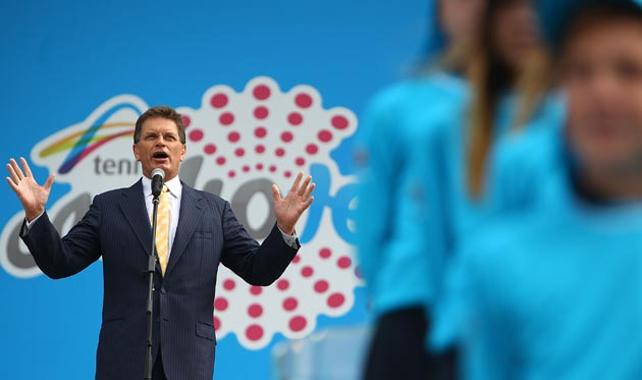
The following article was written by Zareh Ghazarian, a lecturer at the School of Political and Social Inquiry at Monash University. It was originally published at The Conversation.
The resignation of Ted Baillieu
as Leader of the Liberal Party brought an end to his premiership just
two years after guiding the Coalition to a narrow victory in 2010.
Baillieu, an architect by trade, had a lengthy history with the
Liberal Party before entering parliament in 1999. Most notably, he was
the Victorian Liberal Party President during the years of the Kennett
Coalition government.
He began his parliamentary career when he was preselected for the safe Liberal seat of Hawthorn in 1999.
Baillieu’s rise to the premiership began when he replaced Robert Doyle to be leader of the Liberal Party in 2006.
While Baillieu led his party to defeat in the election held in
November of that year, it appeared that his job was relatively safe as
the Party did not appear to have a candidate that would replace him.
BAILLIEU’S PREMIERESHIP
After grinding through another four years in opposition, Baillieu led
the Coalition to a shock election victory in 2010 when it ousted the
Brumby-led Labor government, winning 45 seats to Labor’s 43.
The political problems Mr Baillieu grappled with during his two years
as premier have their roots in the unexpected victory of 2010.
Holding a majority of just one seat always meant that his government
would be one seat away from crisis. The decision of the Frankston MP,
Geoff Shaw, to resign from the party over as yet unspecified disagreements with Baillieu’s leadership precipitated the premier’s downfall.
Baillieu was also grappling with secret police phone recordings
a story broken by the Herald Sun, which appeared to undermine his
authority and power within the government. Bubbling issues concerning
healthcare, law and order and the pay and conditions of the state’s
teachers were also beginning to take their toll on his government’s
popularity.
As recently as the start of this week, Newspoll showed that the opposition was holding onto a significant lead in two-party preferred terms.
VICTORIA’S NEW PREMIERE
The incoming Premier, Dennis Napthine, is also a long-serving MP.
First elected to parliament in 1988, Napthine currently represents the
seat of South-West Coast and was Minister for Ports, Regional Cities,
Racing and Major Projects in the Baillieu Cabinet. He was also a
minister in the Kennett government.
Napthine first became leader of the Liberal Party in opposition
following the Kennett government’s loss in 1999. Opinion polls, however,
showed Napthine was failing to gain the support of voters and the party
replaced him in 2002 with Robert Doyle. After being unceremoniously
dumped by his party over ten years ago, Napthine’s rise to the highest
public office in Victoria suggests that persistence pays in politics.
While the change of leadership serves as a circuit breaker for the
government, it also raises many new challenges for the Liberal Party and
the Coalition government.
In the first instance, Napthine will have to work to garner the
support of the disaffected Geoff Shaw. Getting Shaw’s undertaking to
support the government’s budget and fend off no-confidence motions would
be an ideal start for the incoming premier. If he is unable to do so,
then the government may yet fall.
WHAT OF GENERATIONAL CHANGE
Another challenge for the Liberal Party concerns its next generation
of leadership hopefuls. Matthew Guy, the state’s planning minister and
former chief-of-staff to Napthine, has been touted as a future leader.
Guy, however, is in the upper house.
While there is no constitutional rule that would forbid Guy from
becoming premier, it is traditional for leaders of the government in
Westminster systems to hail from the lower house of parliament. Indeed,
in 1968 John Gorton became the only prime minister in Australian history
to come from the upper house. Within a few weeks, he contested a
by-election for a lower house seat which he subsequently won.
Guy’s failure to take over immediately from Baillieu can partly be
attributed to the fact that he is currently in the Legislative Council.
While other potential leaders exist within the parliamentary wing of
the party, the decision to install Napthine suggests the party placed
its faith in the “old-guard” rather than take a chance on its new
generation.
Baillieu was seen as an unconventional politician and his exit from
office came swiftly. He leaves the government in the same situation with
which it started; holding a slim majority that can be undone by the
decision or action of a single MP.
Words by Zareh Ghazarian
Photo by Marianna Massey for Getty Images Sport



